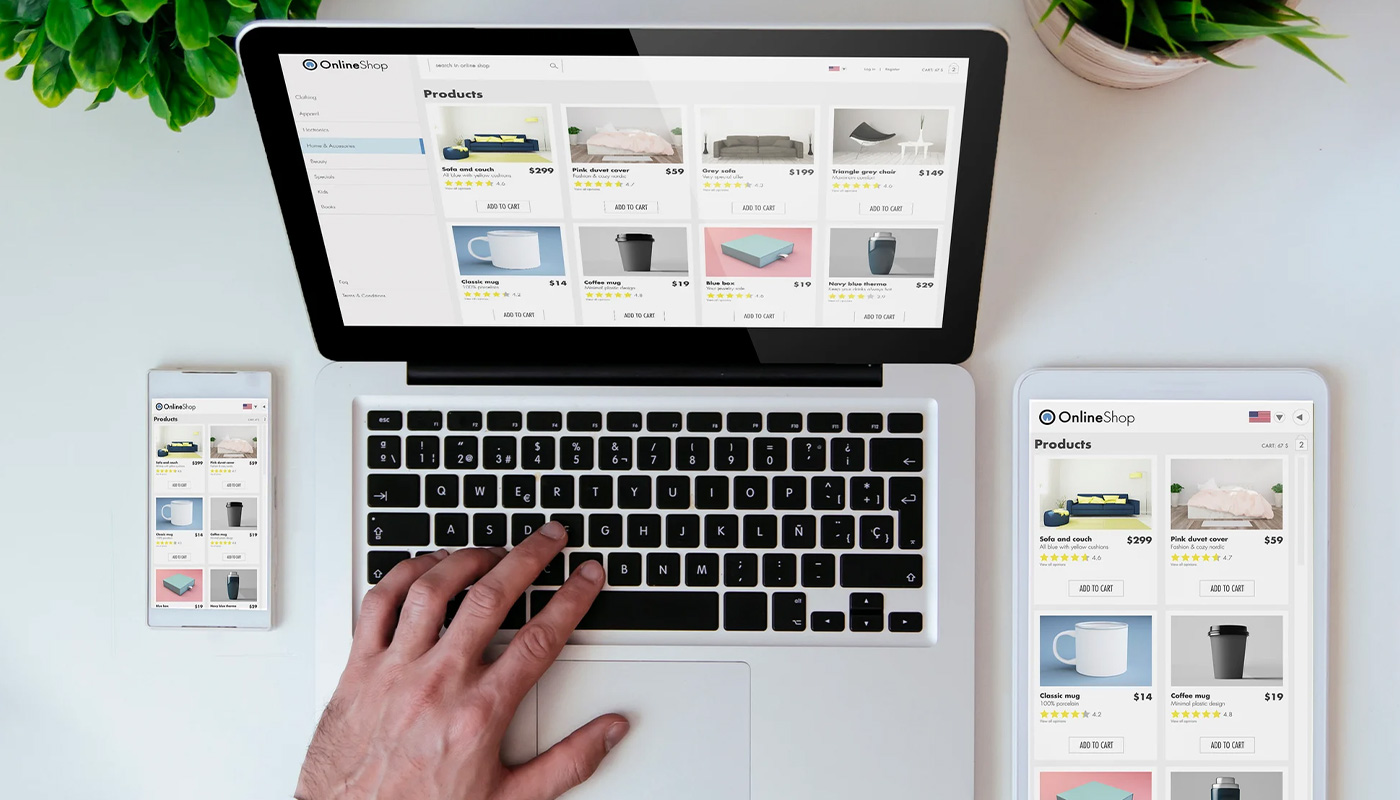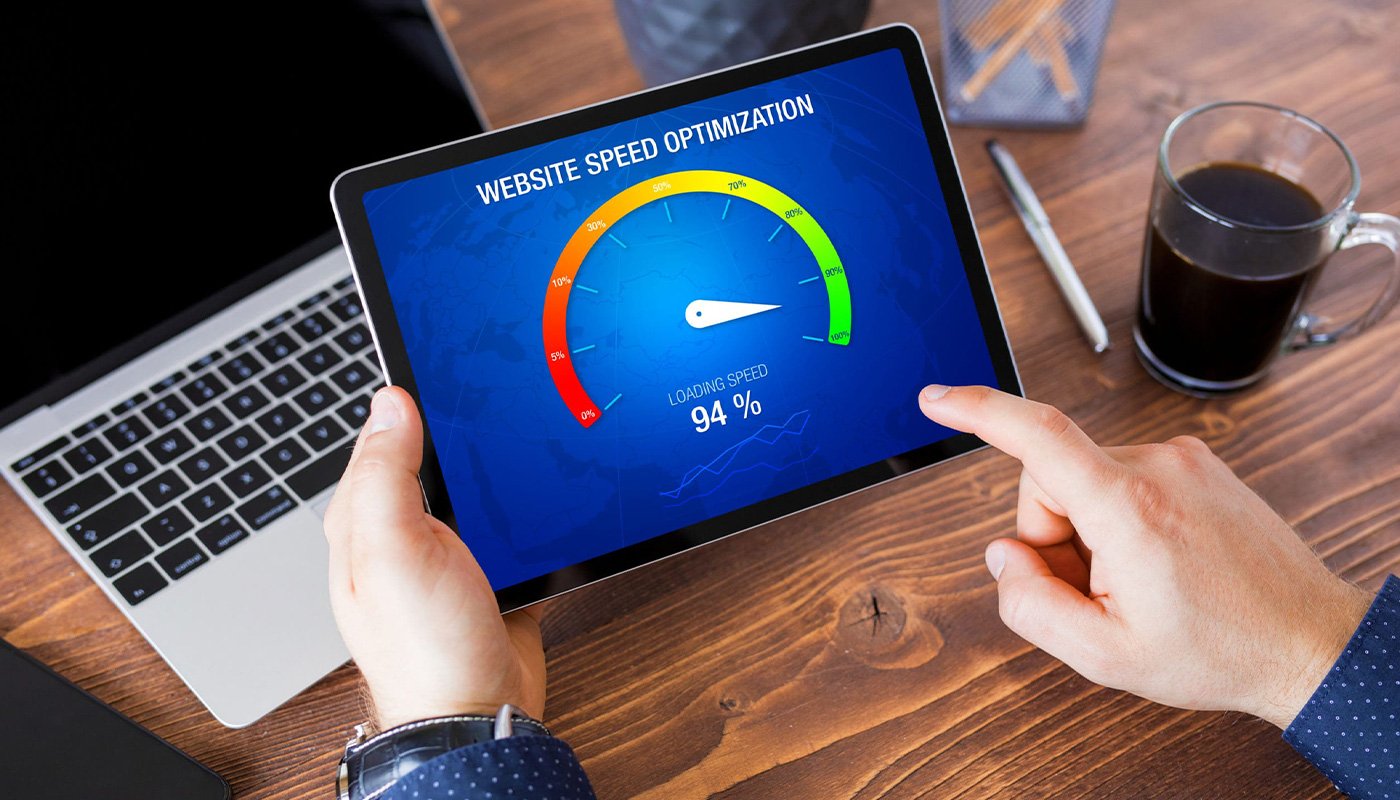
well-designed E-commerce website opens up a world of possibilities for businesses, allowing them to reach out to more people and improve sales in ways that conventional brick-and-mortar retailers could only dream of.
Table of Contents
ToggleHowever, creating a high-performing online business takes much work. The finest E-commerce websites need careful planning, innovative thinking, and the appropriate technologies.
You might own a new online store or be an established firm trying to improve the performance of your current store. This blog can help you create a long-lasting online business.
Why Should You Invest in E-commerce Website Design?
You cannot expect your online business to function successfully just by downloading a template online. It is critical to invest in excellent design if you want it to seem professional, match client expectations, and deliver results for your organization.

First impressions are always important.
You only have one chance to establish a first impression, which is especially true in E-commerce. The first encounter a customer has with your company is through your E-commerce site design, which sets the tone for their whole E-commerce user experience.
There are many ways in which an E-commerce site’s design can turn a potential sale into an abandoned cart, including slow load times, poorly organized navigation or content, low-quality or non-existent imagery, intrusive pop-ups, extra steps in the checkout process, and excessive shipping costs.
Consider this: How would you respond if you came into a website that was hard to use or had an out-of-date design? You would likely click away to a different, easier-to-use company.
E-commerce web design services that prioritize conversions might help you avoid this. If you work with a professional design team, you may build an interface that is visually appealing and entices people to explore your online store further.
Everyone Loves Good Design, Even the Search Engines
A strong E-commerce website design combines technological know-how with a human-centered knowledge of user preferences. When done correctly, it helps you stand out to search engines and provides a fantastic E-commerce customer experience.
A beautifully designed website is always part of an E-commerce business’s most effective marketing methods. Consumers want to swiftly and easily locate the things they need. Similarly, search engines only want to display the finest websites on page one. A strong design helps in this.
Features That Draw In E-Commerce Customers
Here, we have many things to care about. Let’s examine several components contributing to a fantastic e-commerce website.

1. Smooth Navigation and Search Features
This one should go without saying. It should be simple and quick for customers to locate the things they’re interested in. They could leave you if they are unable to. As Russell pointed out,
Product categorization and navigation are crucial because products operate as store aisles, which assist consumers in finding what they're looking for.
Visit the Amazon website. Because of its useful filters, search tools, and straightforward navigation, customers may easily find exactly what they’re searching for. They are encouraged to stay longer, and the e-commerce user experience greatly improves.
2. Mobile responsiveness
Imagine discovering the ideal product and discovering that the checkout process is complex and difficult to navigate. This may be sufficient to cause shoppers to look elsewhere and leave their shopping carts.
Make sure the layout of your E-commerce website can be adjusted to accommodate any platform, be it a desktop, tablet, or smartphone, so that users can have a consistent experience on every device.
Testing your website before launching it on various browsers and devices is a good idea. This makes it easier to foresee any problems with the E-commerce website design and make the required adjustments.
3. Easy, Secure, and Practical Checkout Pages
Imagine discovering the ideal product, only to discover that the checkout process is convoluted and difficult to navigate. This may be sufficient to cause shoppers to look elsewhere and leave their shopping carts.
Instead, create a user-friendly, safe, and secure checkout page. Ensure every field has a clear label to let customers know what must be filled out to finish their transaction. Make sure your third-party payment processor—like PayPal or Stripe—is correctly linked with your website if you’re using one so that consumers don’t have to go through extra steps to complete their orders.
A poor checkout experience can hurt your business’s finances and raise the rate at which customers abandon their carts.
4. Reviews, ratings, and testimonials from customers
As a business, you want to avoid making big claims but never following through. Having client endorsements, ratings, and reviews on your website contributes to prospective buyers’ confidence and trust in you.
According to Russell,
People want to know that the product they’re about to buy is as good as it looks in the pictures. Companies offering high-quality products at reasonable prices should not hesitate to incorporate customer reviews, ideally accompanied by images, if they can.
Ensure the review system is simple to use so that clients can submit their opinions without difficulty.
Russell continued,
This kind of user-generated content helps to build trust and encourage customers to buy
Custom E-commerce websites that highlight your best testimonials and ratings to increase client confidence are the specialty of E-commerce web design businesses.
5. High Quality- Product Photography
Excellent photography is crucial for companies that sell products. Although you don’t have to be an expert photographer, having high-quality images of your items can increase sales.
According to Russell,
All product angles, packaging, and reference images for size and scale must be captured in high-quality, high-resolution images. Depending on the product category, images that depict details, fit, and textile textures, as well as lifestyle images of the product in use, can also be differentiators in assisting shoppers in selecting the right items
If your budget permits, you should spend money on professional photographs. If not, however, make an effort to snap crisp, detailed pictures that show the goods from several perspectives. With the help of these E-commerce marketing techniques, buyers can make more informed decisions about what they’re purchasing and if it’s worth their money.
Excellent photos are equally vital for service-oriented firms. Invest in high-quality images of your staff and workspace so prospective clients can get to know the faces behind your company.

6. Fair and Open Pricing
Like traditional retailers, Shopify’s online stores need customers to know how much they pay before committing. When it comes time for the checkout page, you don’t want customers to feel taken advantage of or startled.
Russell mentioned a few things to think about while creating your price strategy:
- Channel exclusivity;
- Omni-channel pricing strategy;
- Minimum purchase requirements and whether to offer free delivery;
- MAP rules, promotions, and discounts;
Russell stated,
The primary objective is for the online retailer to keep a healthy profit margin while the customer feels she’s getting a good value for her money
Ensure that every product page has a clear pricing list that makes it easy to see discounts, promotions, or shipping charges. E-commerce marketing tactics that withhold expenses till the very last moment undermine consumer confidence and result in abandoned baskets.
Suggestions to Improve the Performance of Your Online Store
Knowing what components to add to your E-commerce website is insufficient. Additionally, you need to know how to maximize their effectiveness and sales.
Here is a list of best practices for E-commerce site design to get you started.
Tip #1: Remember the Keywords
Ensure you include the appropriate keywords across your website, including product descriptions, blog articles, and homepage content. Effective E-commerce marketing techniques focusing on search engine optimization (SEO) may significantly increase your website’s exposure and traffic.
Use resources such as Google Keyword Planner to identify the ideal keywords for your niche. But try to avoid becoming overly obsessed with keywords. Overusing keywords in your content might backfire and result in search engine penalties.
Purchasing expert E-commerce web design services guarantees that your website is optimized for organic search results and is search engine friendly.
Tip #2: Make Use of Web Data
The use of aesthetics and design in an e-commerce store is limited. Data is also required to monitor website traffic, sales success, and consumer behavior. This information may help you decide which design to use, when, and how to adjust it to boost conversions.
But Russell cautioned,
Use these sparingly as shoppers lose patience and interest when bombarded with too many upsells and requests for personal information, even though it can be tempting to include pop-ups requesting emails and phone numbers.
Using tools like Google Analytics, you can better understand your customers’ journey and make the required adjustments to improve your website’s performance. Make sure you have a system in place to track and evaluate consumer activity since the most successful E-commerce websites utilize data to support their choices.
According to Russell, “your website is never truly complete,” which means it must be updated, modified, and enhanced regularly.
The quickest way to finish the task is to outsource e-commerce web design to organizations if you need to become more familiar with using these technologies. They provide you with all the measurements and data analysis you require to decide on design optimization with confidence.
Tip #3: Select the Appropriate Domain Name
As you go down the street, you spot a store with a catchy name. Would you enter the building? Most likely, yes. This also applies to your online store.

When consumers visit your website, they will first see your domain name. To increase the likelihood that customers will remember it and return for more purchases, make sure it is fascinating and simple to recall.
Make sure it conveys both your brand and the work that your company conducts. The success of your E-commerce marketing campaigns may hook on it!
Tip #4: Enhance Your Product Listings
Since products are your online store’s lifeblood, you must ensure they are optimized for E-commerce UX and kept current. Your product descriptions should also be well-written and offer buyers a sense of the items’ characteristics.
Include a list of all the features, measurements, materials, and other details to help your customers comprehend what they’re purchasing and persuade them to make more purchases. To ensure that customers know precisely what they’re getting when they check out, you should also include photographs that appropriately represent your items.
Additionally, we advise including a review area on every product page. Customers feel more confident and are more likely to buy the goods since they can see what others think.
Tip #5: Make a faster-loading website:
Build Your Website Quickly: The design of an e-commerce website is more than just what you see. It also concerns how fast you can obtain what you require. A website that loads pages slowly or takes a long time to complete orders is the #1 factor that irritates E-commerce customers.
Russell advises against taking shortcuts and instead investing in
“A fully integrated platform that will not only provide an excellent shopping experience, but also connect via API to your existing business systems for conversion tracking, CRM, inventory management, shipping, and accounting.”
Website speed and website updates go hand in hand. Make a quality hosting investment and speed-optimize your website. This will increase clients’ interest in the product and encourage them to finish it instead of quitting because it’s taking too long.

Takeaway: The user experience is everything.
In the end, it all comes down to the E-commerce consumer experience. How fast and simple is it for clients to search for what they need on your website, discover it, and complete a purchase?
“Anticipate their needs and keep them in mind through every step of the purchase journey,” suggests Russell.
Your E-commerce customers are, after all, the ones that keep your company operating. Make sure your E-commerce website design considers their wants by paying careful attention to them. Even if many different E-commerce marketing techniques are available, the key is to provide the greatest possible customer experience.
Create E-Commerce Websites That Drive Conversions, with the help of Groww
Creating a website for your company is similar to painting a house’s walls. Even when you choose beautiful colors and patterns, the structure could suffer if you don’t execute it properly.
We at Groww Digital Marketing Agency know this idea, so our staff makes endless efforts to design the most user-friendly and thoughtfully constructed E-commerce websites. We create user interfaces that make buying simple and pleasurable using data-backed insights, which help both small and large enterprises increase sales.
Allow us to assist you in turning your online store and business into a highly effective machine.
- Share
